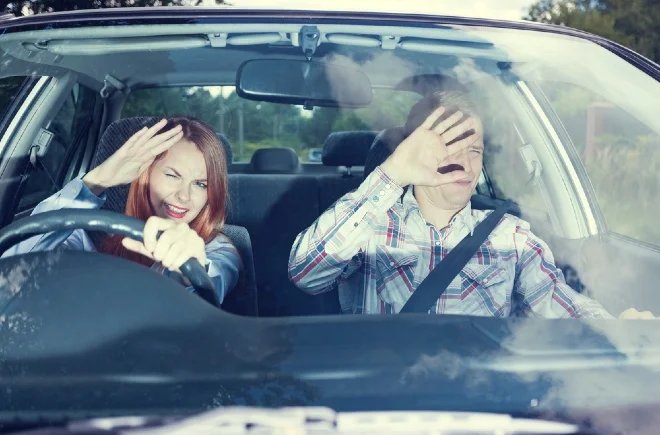Did you ever feel why bright car
headlights actually bother your eyes with the pain?
What Causes Glare While
Driving at Night?
How to Reduce Glare While
Driving at Night
Eye
experts say that the strong bright car lights that appear in your way at night
suddenly dazzle your eyes so much that you can't see anything for a few seconds
before your eyes recover and get used to the new lights.
This phenomenon is called ‘disability glare which actually impairs your vision in
oncoming traffic.
 |
| Why are your eyes so sensitive to bright car headlights all of a sudden? |
Why Do Bright Car Headlights at Night Cause Pain in Your Eyes?
What Causes Glare While
Driving at Night?
The
motor industry is constantly proud of how it has improved car lighting
performance to keep you safe.
Meanwhile,
eye experts say the downside is that the strong bright car lights that appear
in your way at night suddenly dazzle your eyes so much that you can't see
anything for a few seconds before your eyes recover and get used to the new
lights. This actually affects your vision in oncoming traffic.
At
the same time, as the driver's lifespan decreases, the eye lens and cornea are
effectively blurred, and as bright light shines through them, drivers suffer
something called 'disability glare'.
Glare while driving at night occurs
as a result of both bright and dim lights and due to a reduction in the contrast of images brought on by
dim lighting
Although
many researchers have long blamed some car manufacturers for their strong and
bright lights and marketing them as a commercial advantage.
However,
researchers recently revealed that some people were affected by these lights,
which may also be attributed to aging.
With
the development of lights used in the auto industry over the past decades, new
types have emerged stronger and brighter than before.
According
to researchers at the University College London, the effect of light on the
eyes increases with age, due to the dispersion of light when entering the eyes,
as with age, the clarity of the lens and the cornea of the eye decreases,
causing light to disperse them when entering the eye to spread around and
inside, making images that the person sees appear blurry and distorted.
At
night, the pupil expands to allow more light to enter, making the dispersion of
light from the eye larger at night hours, thereby increasing the chance of
lack of vision, when exposed to bright light in what is scientifically called
disability glare, which means temporary blindness resulting from exposure to
bright light for a period that may extend to 10 seconds.
According
to researchers at The University of Vienna in Austria, the bright light may
cause - except temporary blindness - an actual feeling of pain in the eyes,
somewhat similar to the pain caused by joint stress excessively, which may
cause the subject to close the eyes in response to the brain without thinking,
and thus may cause many traffic accidents.
It
is worth noting that the changes that affect the eye with age occur even in
healthy eyes and that there are no health problems in them, such as changes in
the clarity of the cornea and lens.
The
researchers suggest that the driver should wear special medical glasses
equipped with a barrier that absorbs the eye's UV rays, thus mitigating
possible traffic accidents as a result of bright lights at night.
How to Reduce Glare While
Driving at Night
To reduce glare, minimize challenges
of driving at night and stay safe on the roads at night, try the following
tips:
- Clean your headlights.
- Adjust your rearview mirror.
- Adjust your speed to the reach of your headlights.
- Keep your eyes moving.
- Look to the right and at the sides of objects.
- Avoid being blinded by oncoming high beams.
- Avoid using lights inside your vehicle, which temporarily can impair your vision at night.
- Ask your doctor about anti-glare glasses.
- Protect your eyes from glare and wear eye protection during the day.
- Wear eye protection during the day.
Tags
bright car headlights
eye health
eye problems
health
laser technology
light emitting materials
technology
